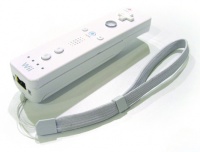Remote possibility
Devices that harness the Nintendo Wii’s motion-sensing capabilities could improve assembly-line tracking

In an effort to improve industrial manufacturing processes, researchers in the US have turned to an unlikely source of inspiration: the Nintendo Wii.
Headed by Prof Ming Leu, the team from Missouri’s Science and Technology Centre for Aerospace Manufacturing Technologies is using components from the games console to track movements along pilot production lines.
The application exploits the motion-sensing capabilities of the Wii’s remote controller – or Wiimote – which enables gamers to interact with and manipulate items on screen via gesture recognition and pointing.
In Leu’s application, the devices are being used to record assembly processes and investigate ways of improving the methods companies use to train workers, shorten cycle time, reduce workplace injuries and help manufacturers improve the way they communicate with plants across the globe.
Leu explained that he chose the Wiimotes because of their wireless connectivity, their good measurement range and their relatively low cost.
Outlining the devices’ industrial application, Leu said that, just as gamers can use the Wiimote to simulate the movements of a tennis racquet or bowling ball, so a properly situated device can capture the movements of an assembly-line worker through a variety of processes.
Register now to continue reading
Thanks for visiting The Engineer. You’ve now reached your monthly limit of premium content. Register for free to unlock unlimited access to all of our premium content, as well as the latest technology news, industry opinion and special reports.
Benefits of registering
-
In-depth insights and coverage of key emerging trends
-
Unrestricted access to special reports throughout the year
-
Daily technology news delivered straight to your inbox










UK Enters ‘Golden Age of Nuclear’
Anybody know why it takes from 2025 to mid 2030's to build a factory-made SMR, by RR? Ten years... has there been no demonstrator either? Do RR...